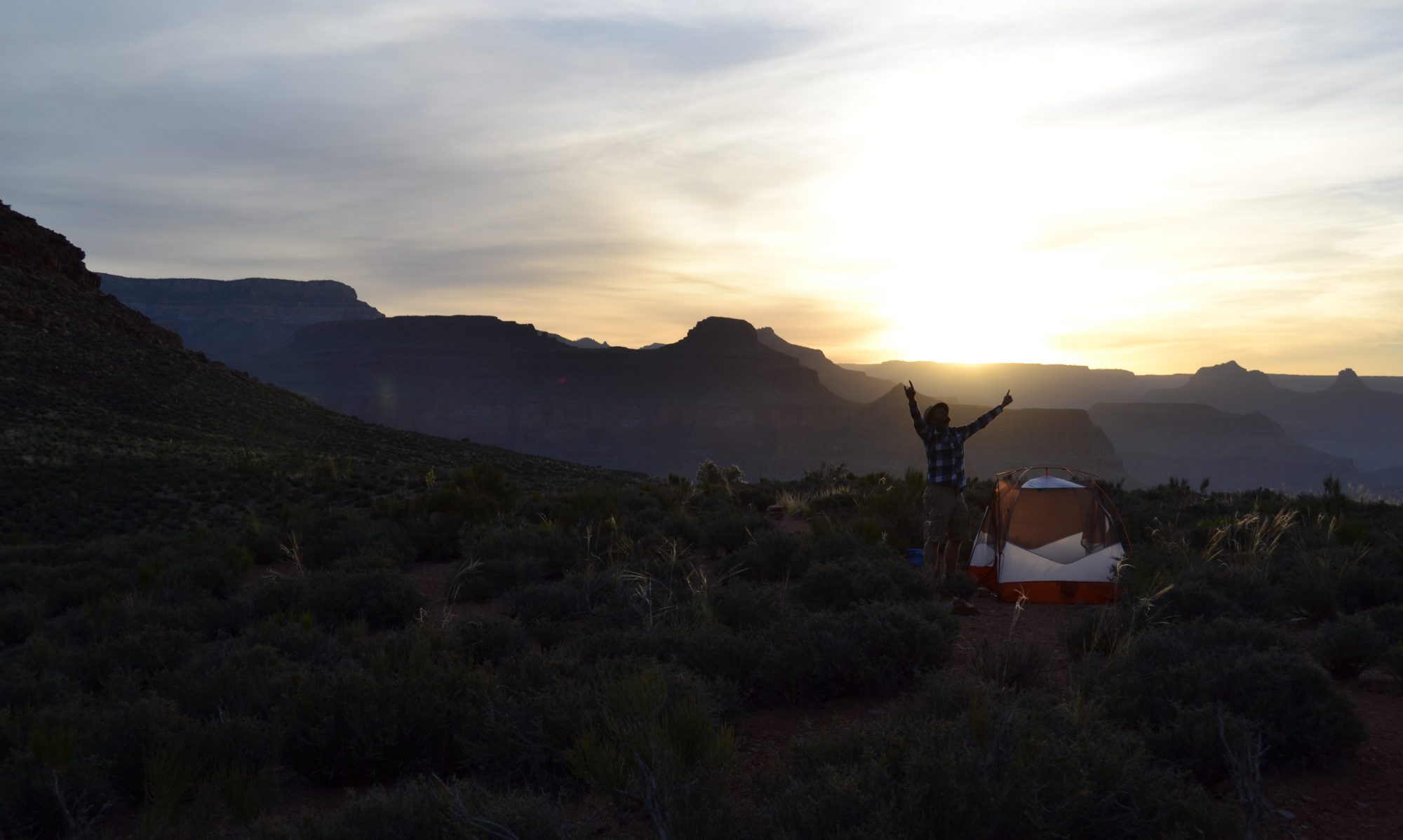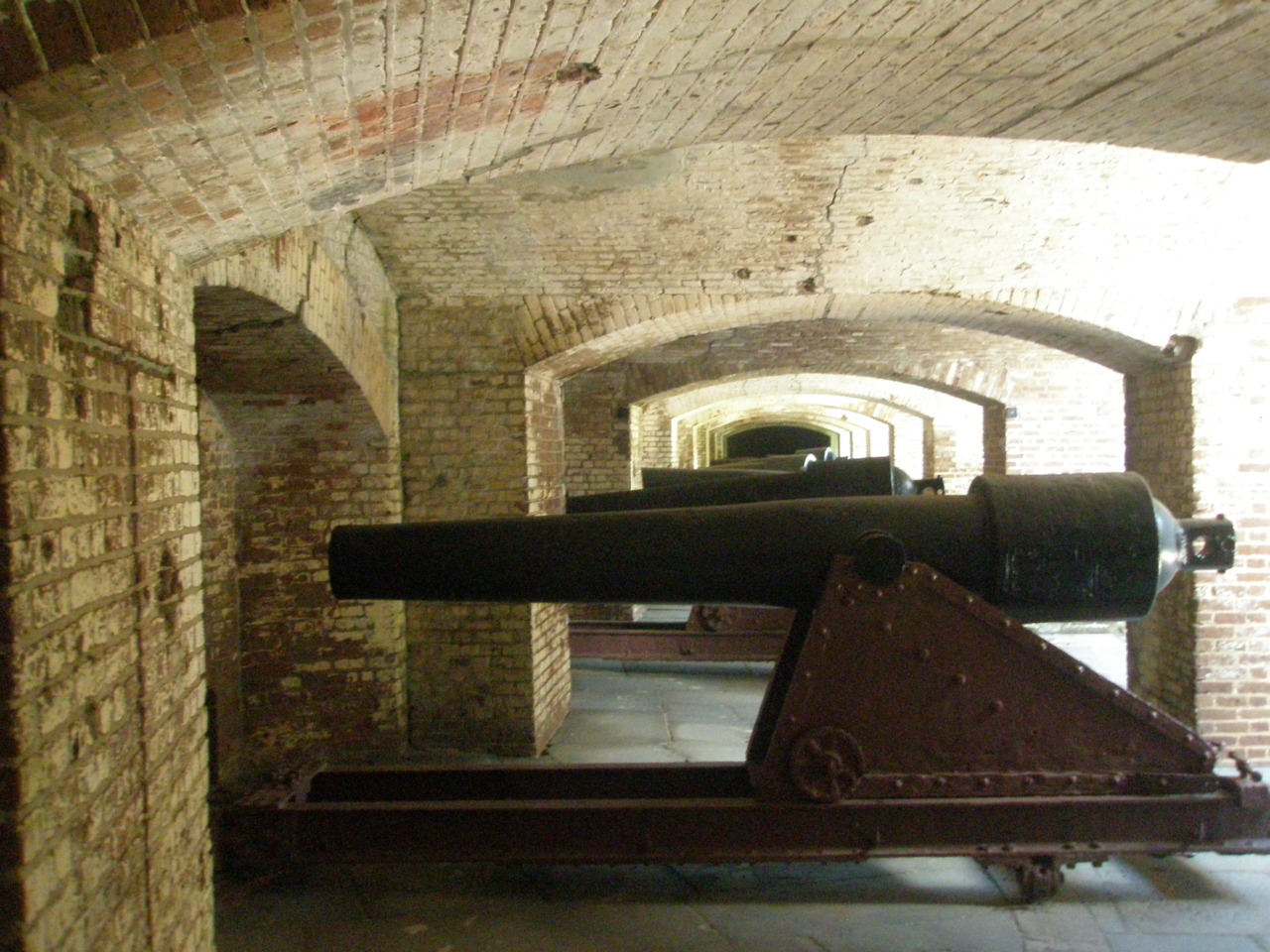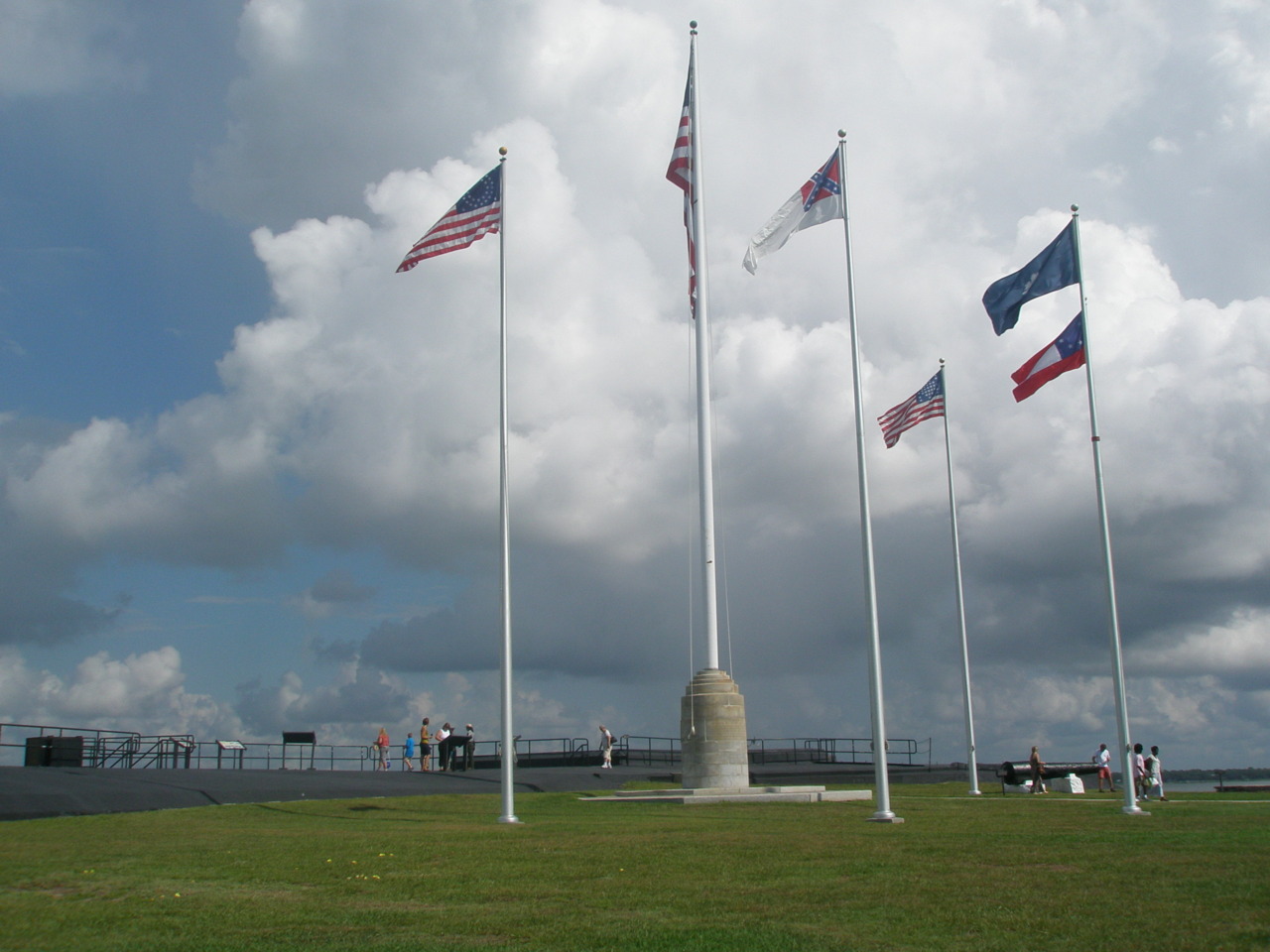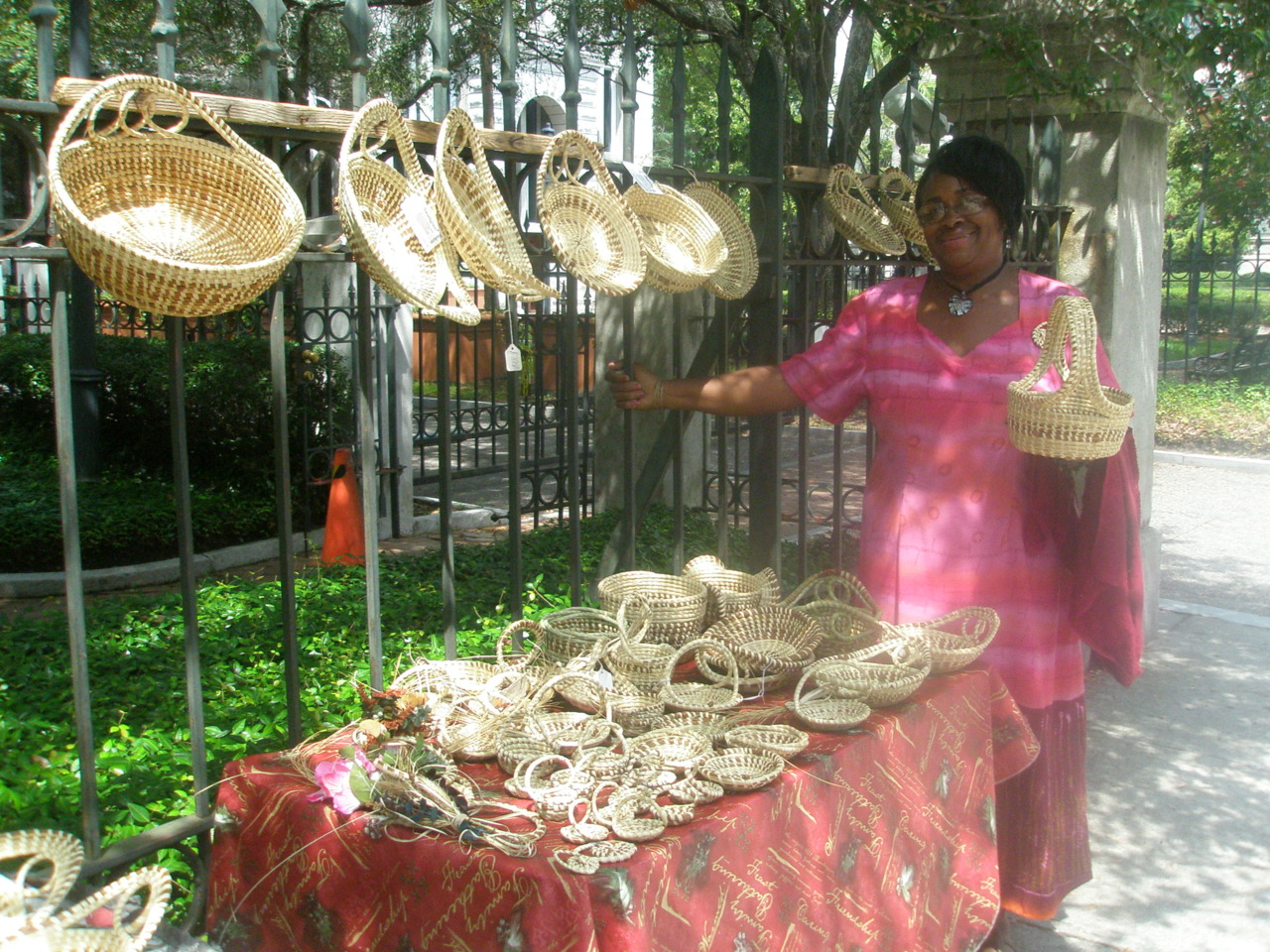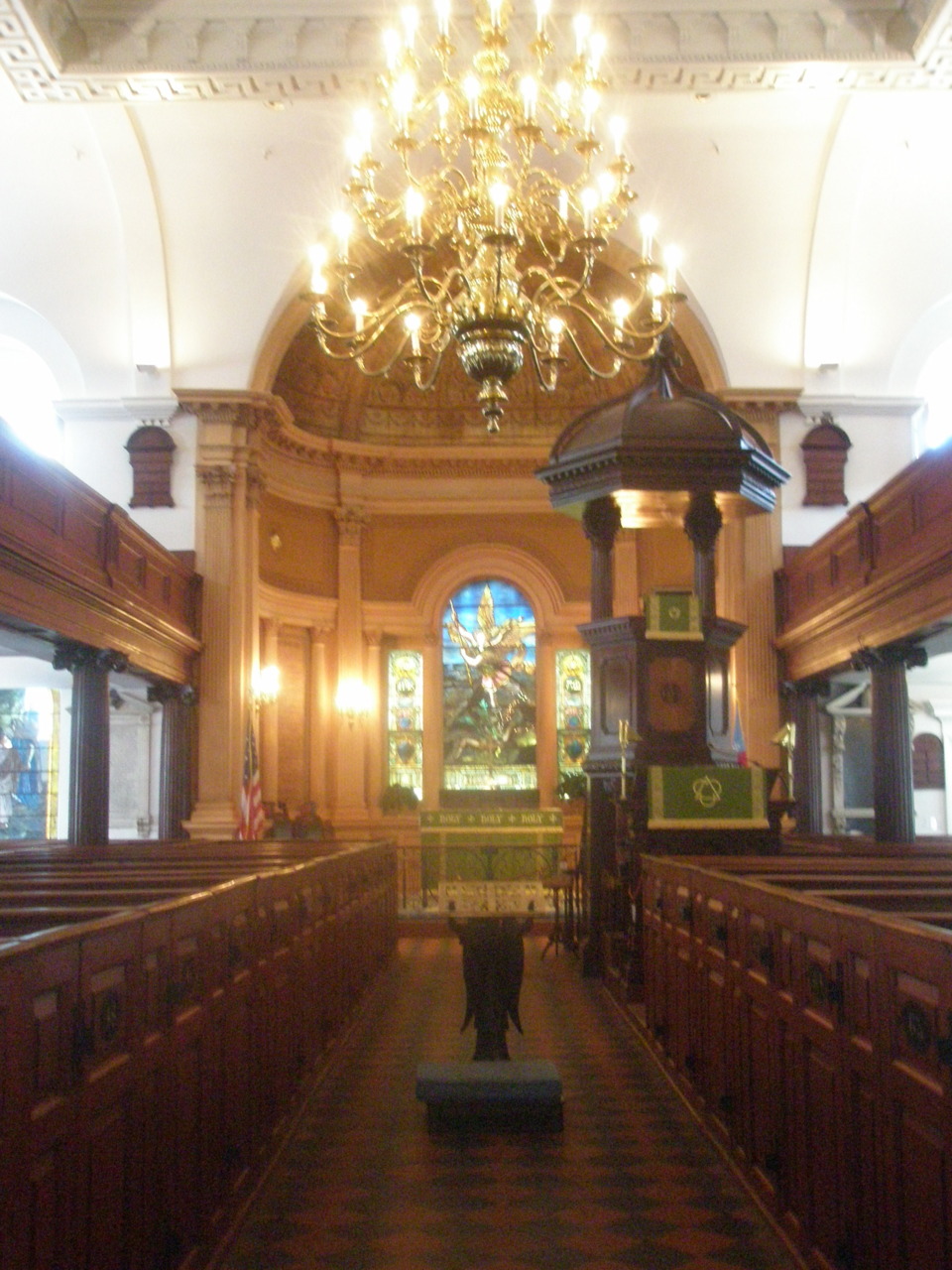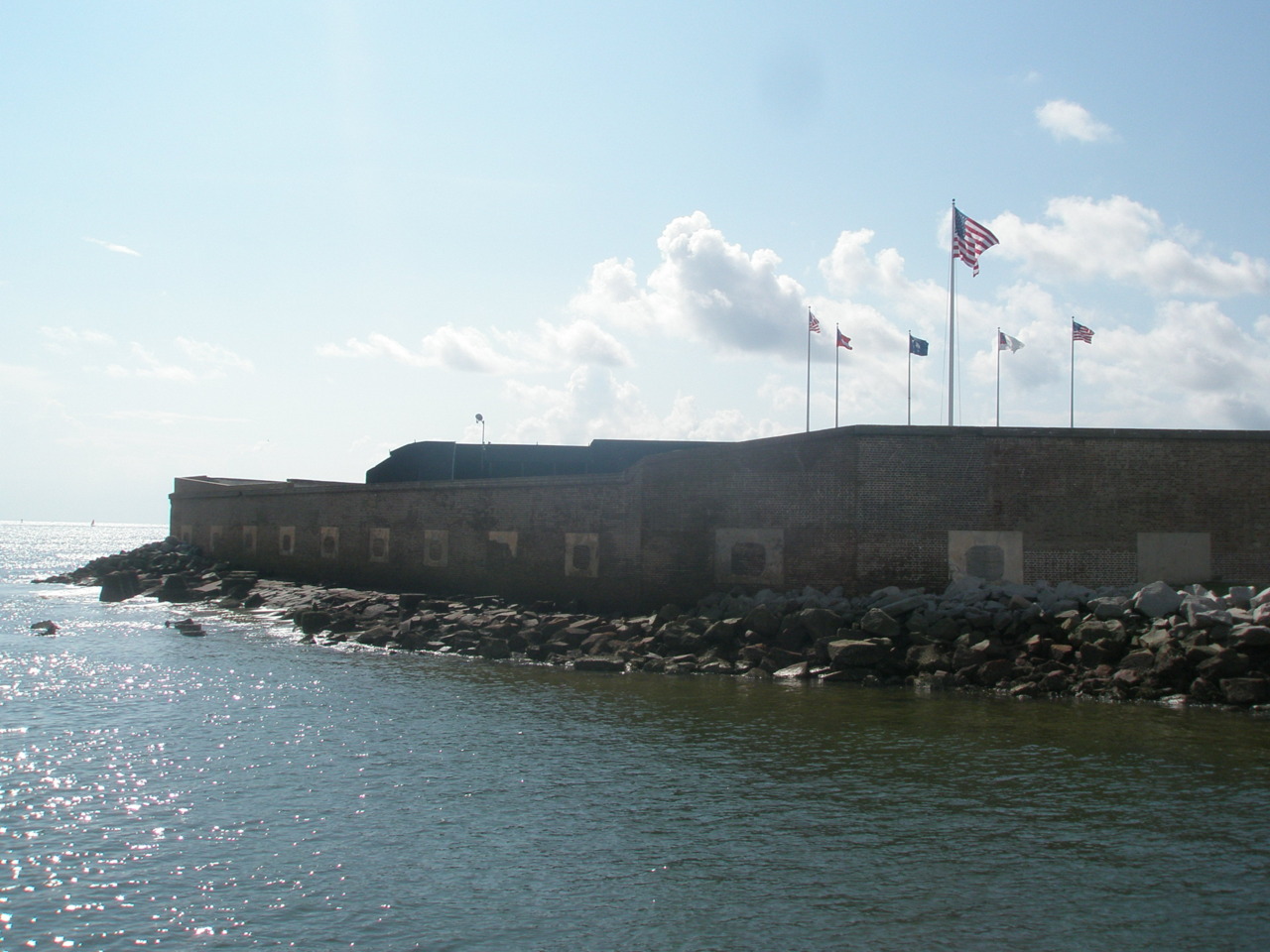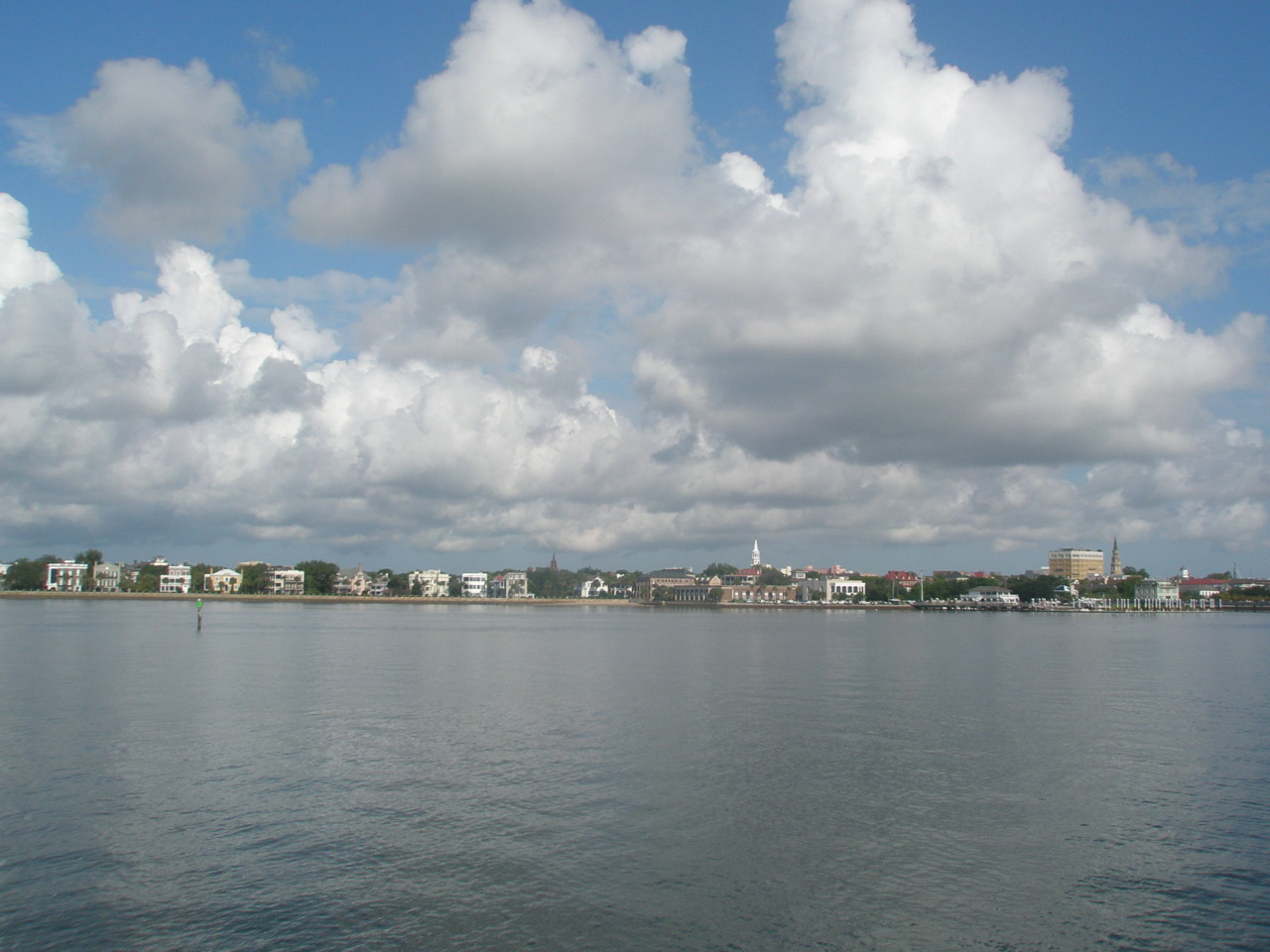8/24/2011
Charleston, South Carolina
I high-tailed it to the visitor’s center where I quickly learned that I needed to leave immediately to catch the ferry to Fort Sumter. I parked on the street, running in flip-flops past the garage I hadn’t noticed before. I quickly bought the ferry ticket, perused the tiny museum, and hopped on board. It was a beautiful day: the bright blue sky held the puffiest white clouds and highlighted the colonial spires on the slowly shrinking mainland.
The tourists and I listened attentively to our guides before dispersing around the tiny island. The first shots of the civil war were fired here. The first casualty of the war also occurred here. After the fort surrendered, the confederates allowed the union soldiers to fire off a salute as they lowered the American flag. A gun backfired during this ceremony, the first of many tragic deaths in this bloody war. Most of the island was damaged during the war, leaving a majority of this landscape blank, in ruins, or historically reconstructed. I wandered about the canons wondering what it would have been like to be a soldier here, and – even cooler – how awesome it would have been to be a pirate blockading this little city.
Eventually I meandered to the gift shop to get my passport stamped. I asked the guy behind the counter where the station was and he pointed to a hidden desk beside him, littered with stamps and inkpads. I glanced at them and then picked up one that looked ok and stamped away. The man came over and said eagerly that I could stamp all of them. One was an anniversary of this, another a commemorative of that, another some signifier that I had driven on a memorial highway I had never even heard of. This was ridiculous. I smiled politely that I had gotten the stamp I wanted, but the man seemed utterly perplexed that I didn’t want to collect them all. They’re not worth anything, they simply note that you visited a place – and I don’t need 12 different inked stamps taking up unnecessary room to demonstrate this.
Soon our hour was up and the highly enthusiastic guide shuffled us all back on to the ferry. A line of us formed and I got him to take my picture just beyond the fort’s walls. Two older men stood behind me in this photo line, one a relatively normal dressed white man the other a union-uniformed clad graying black man. The soldier eagerly handed off his camera to the guide and stood proudly in front of the fort, bringing his blue wool arm up to his hat in salute, a sweetgrass rose sticking playfully out of his brim. He was certainly a sight to see. And I had to get his story. So, as the boat began to lurch forward and it appeared the guide had no new stories to regale us with, I marched up to the front of the boat and sat in a plastic lawn chair in the row in front of him. He was kind of in conversation but it didn’t look that important so I simply turned around and asked what’s up. I soon learned that his uniform was an authentic reproduction of those issued to union soldiers and that he was part of a small Civil War reenactment group – from Colorado. Excited at my puzzled expression, he soon delved in to the various skirmishes that had occurred out west. According to him, the Confederates had decided that if they got to California and could control two different shorelines, then their legitimacy would be enhanced to the rest of the world. And, in order to get to California, they would need the money from Colorado’s vast mining stakes. It seemed a little far-fetched, but it was a compelling story so I nodded and kept listening. Soon I was blessed with tiny images of his reenactment buddies from the screen of his camera. His friend was by far less interesting and didn’t really say much besides the occasional comment when I tried to bring him into the conversation. Nevertheless we all smiled and laughed and continued to tell stories until the boat reached her port.
And then I got two parking tickets, my first of the whole trip. And they were expensive. Charleston blows.
I had learned from the tour guide that some of the Rutledge family were buried in the cemetery at Grace Episcopal church. Being that I have memorized the entire production of 1776 the musical, I was immediately intrigued and headed downtown. I peeked into the doors of the church, only to find a priest at the pulpit, concentrated in noonday prayer. He looked up, shocked that somebody was actually attending his daily service, and ushered me forth. Thank God this was an Episcopal church, otherwise I would have been completely lost and even more awkward standing there in the pews as this man’s only disciple. I tried to approach him afterward to get a tour or history of the place from someone knowledgeable, but he quickly scampered off. I perused the adjoining graveyard by myself, trying my best to make out the ancient headstones and get a feeling of how long each person lived, making up stories of their life within such a different era. I did eventually find Rutledge, but alas it was the wrong one. This one signed the Constitution, not the Declaration of Independence. I’m not entirely sure why I find this less interesting, but there you go.
